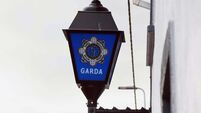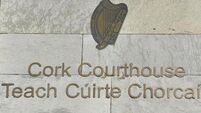New figures reveal a drop in detection rates for reported rapes

The Gardaí encouraged victims of all crimes, especially sexual and domestic crimes to report the matter to the authorities. File image.
The detection rate for reported rapes dropped from 15% in 2018 to 11% in 2019, according to statistics provided to the Irish Examiner.
And the garda figures further show the detection rate for 2020, as of 1 October, stands at 2%.
A Garda statement said the figure for this year “will continue to grow” as it refers to rapes that were reported in 2020 and have so far been detected, with more detections as time passes.
A Garda statement shows that detection rates have dropped dramatically since 2015, but said this was because of significant changes, introduced in February 2018, in how investigations are marked detected or not.
The detection figure for rape of a male or female stood at 48% in 2015, 40% in 2016 and 29% in 2017.
The statement said figures from 2018 on could not be compared to previous years.
It explains that since February 2018, a crime can only be marked as detected when there is a sanction outcome – which must be a charge in the case of rape.
Prior to that, crimes were often marked as detected when there was sufficient evidence to identify the offender – but that for various reasons the possibility of a prosecution was not available.
The statement said that An Garda Síochána “absolutely recognises” the importance of an outcome to a victim and confirmed that, just because no proceedings commenced, this did not mean that the crime did not occur or that the victim was not believed.
It encouraged victims of all crimes, especially sexual and domestic crimes, to report such matters to gardaí.
The falling rate was the topic of a detailed discussion at this week’s Policing Authority meeting, at which a Garda detection figure of 4% for rape and sexual offences in 2020 was mentioned.
There were differing views expressed as to what the figure meant – prompting the Garda's Chief Information Officer, Andrew O’Sullivan to explain that it was an “artificially low” figure and that with the passage of time, further detections would be made.
The statement provided to the said the 4% figure referred to rapes reported and detected in the 12 months to August 2020.
It said the length of the full detection cycle – to achieving a sanction – meant that detection rates would “continue to grow”.
It added that the Garda National Protective Services Bureau was conducting a review of detection rates for sexual offences.
The statement said that the organisation had recently completed the establishment of Divisional Protective Services Units (DPSUs) in every Garda division.
It said this is a significant step forward to enhancing the investigative capabilities in relation to sexual crimes and that the work of the units has received “positive remarks” from the Office of the DPP.
While expressing concern at the falling detection rates, members of the Policing Authority praised the work of the DPSUs at Wednesday’s meeting.











